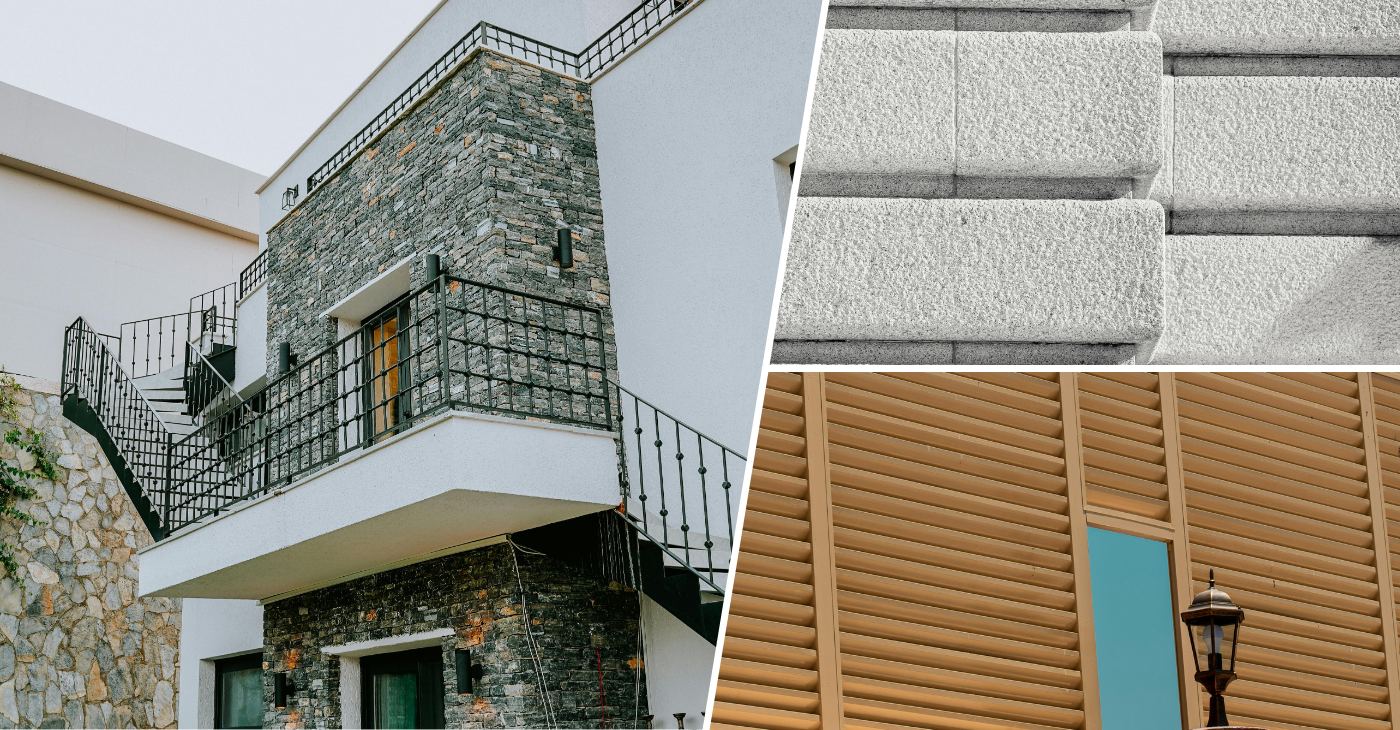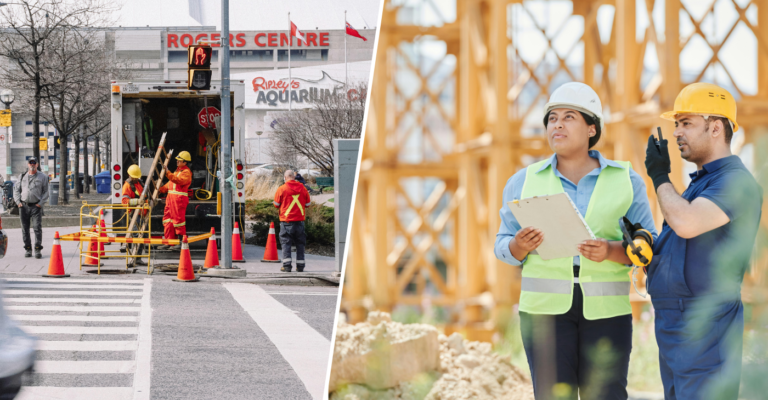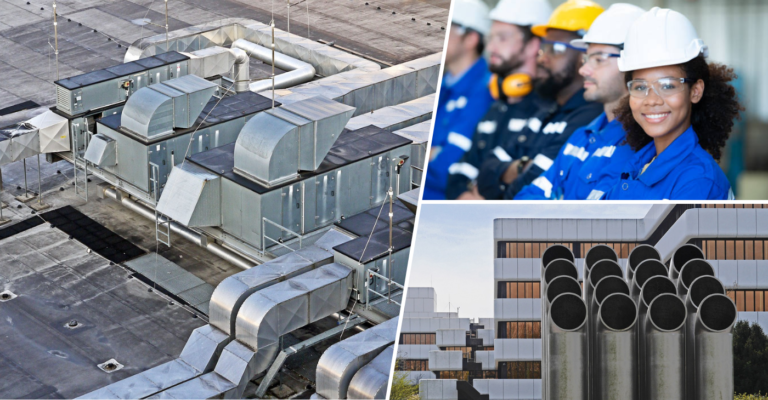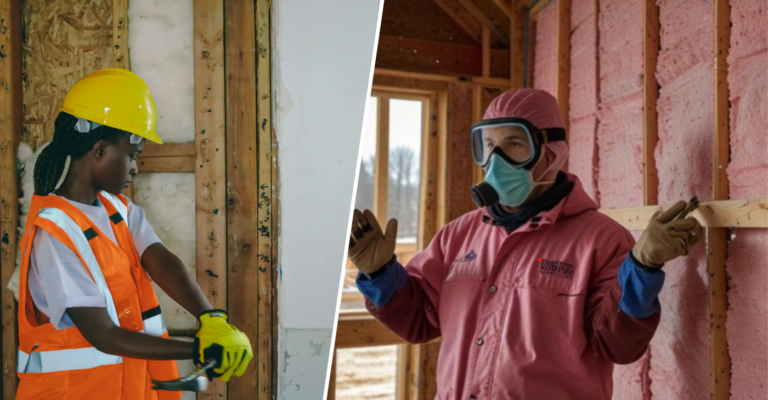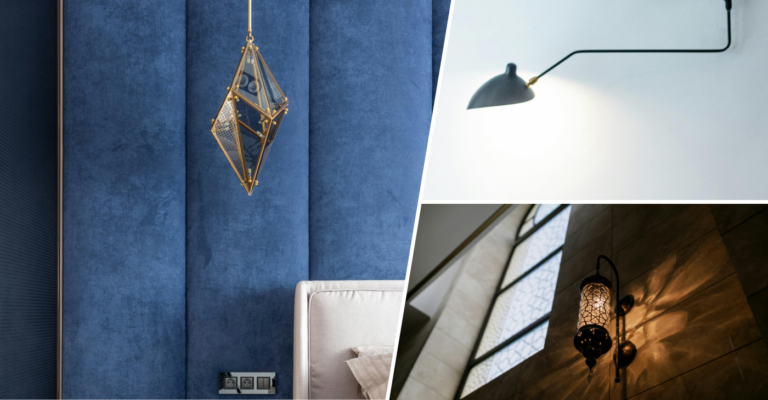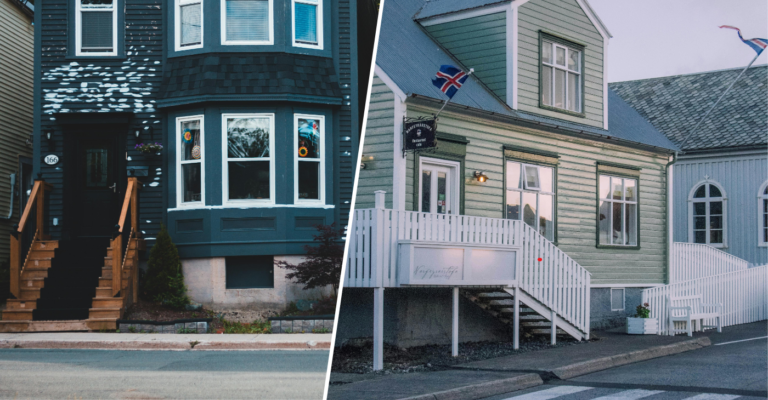7 Innovative alternatives to rendering – Explore these alternative wall solutions
Alternatives to rendering
When it comes to finishing exterior or interior walls, traditional rendering has long been a preferred choice for homeowners and builders alike. Rendering offers a smooth, durable surface that can be painted or textured to create a variety of finishes. However, as design trends evolve and the demand for more sustainable, cost-effective, and visually distinctive options grows, innovative alternatives to rendering are becoming increasingly popular. These alternatives not only provide aesthetic appeal but also bring practical benefits such as ease of application, enhanced durability, and even environmental advantages. In this comprehensive guide, we will delve into seven of the most innovative alternatives to traditional rendering, offering you a range of solutions to meet your design and functional needs.
1. Cladding: A versatile and aesthetic choice
Cladding has emerged as one of the most versatile and aesthetically pleasing alternatives to traditional rendering. Cladding involves the application of a material over the exterior or interior walls to provide a protective and decorative finish. The materials used in cladding are diverse, ranging from timber, stone, and brick slips to metal, fiber cement, and composite panels. Each material offers unique characteristics that can dramatically alter the appearance of a building.
Timber cladding, for example, is prized for its natural warmth and organic appeal. It is available in various species like cedar, pine, and larch, each offering different tones and textures. Timber cladding can be installed horizontally, vertically, or even diagonally, allowing for creative design possibilities. It also provides natural insulation properties, enhancing the energy efficiency of the building.
Metal cladding, on the other hand, is favored for its sleek, modern appearance and durability. Materials like aluminum, zinc, and steel can be used to create bold, contemporary facades that require minimal maintenance. Metal cladding is highly resistant to weathering, making it an excellent choice for buildings in harsh climates. Read more
Advantages:
- Wide range of design options to suit different architectural styles
- Improved thermal insulation, especially with materials like timber and composite panels
- Low maintenance, particularly with durable materials like metal
- Enhanced weather resistance and protection for the building structure
Considerations:
- Higher upfront cost compared to traditional rendering
- Installation may require a substructure or specialized support systems
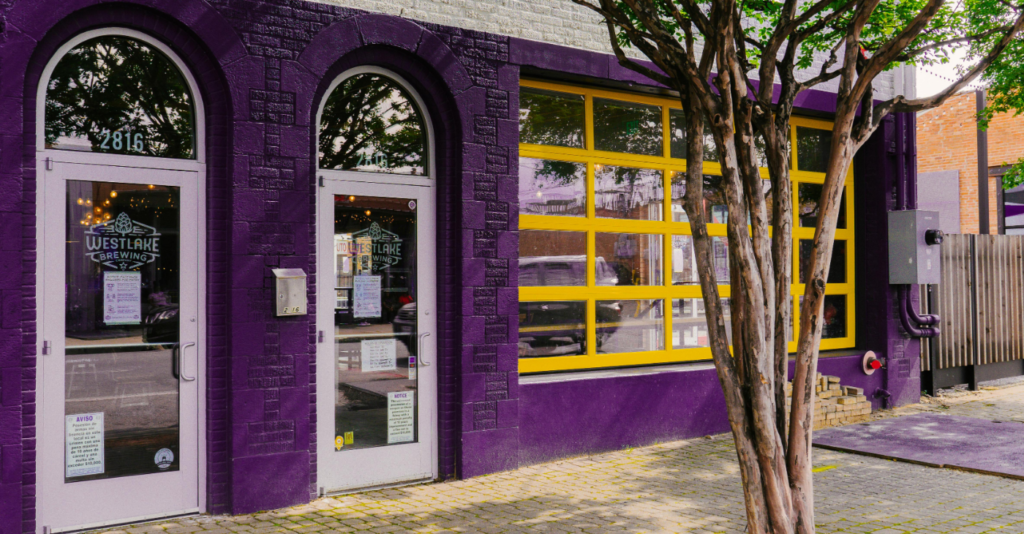
2. External wall insulation (EWI): Energy efficiency meets modern aesthetics
External Wall Insulation (EWI) is a highly effective alternative to rendering, particularly for older buildings that require improved energy efficiency. EWI involves attaching insulation boards to the exterior walls and covering them with a protective and decorative finish. This method not only enhances the building’s thermal performance but also gives it a fresh, modern appearance.
The insulation boards used in EWI systems can be made from materials like expanded polystyrene (EPS), mineral wool, or phenolic foam, each offering different levels of thermal resistance. Once the insulation is applied, it is covered with a render system, which can be acrylic, mineral, silicone, or lime-based, depending on the desired finish. This protective layer not only seals the insulation but also provides a visually appealing exterior.
Advantages:
- Significantly improves energy efficiency, leading to reduced heating and cooling costs
- Provides a clean, modern aesthetic that can be customized with various finishes and colors
- Protects the underlying structure from weathering, extending the building’s lifespan
- Reduces condensation and dampness within the building, contributing to a healthier indoor environment
Considerations:
- Installation can be expensive, especially for larger buildings
- Some EWI systems may require planning permission, particularly in conservation areas or for listed buildings
- The installation process is more complex than traditional rendering, requiring skilled labor
3. Stone veneer: The timeless beauty of natural stone
For those who admire the timeless elegance of natural stone but are deterred by the weight and cost of full stone masonry, stone veneer offers an ideal alternative. Stone veneer consists of thin slices of natural stone or high-quality concrete that replicates the appearance of stone. This lightweight material can be applied to both exterior and interior walls, creating a luxurious and sophisticated finish.
Stone veneer is available in a wide range of stone types, including limestone, sandstone, slate, and granite. Each type offers unique colors, textures, and patterns, allowing you to achieve the exact look you desire. Whether you’re aiming for a rustic, traditional appearance or a sleek, contemporary facade, stone veneer can deliver.
Advantages:
- Lightweight and easy to install compared to full stone walls
- Cost-effective, providing the look of natural stone without the associated expenses
- Adds a natural, earthy aesthetic that enhances the property’s value
- Durable and resistant to weathering, ensuring long-lasting beauty
Considerations:
- Installation requires skill to ensure a seamless and realistic appearance
- Stone veneer needs to be applied to a solid substrate to ensure proper adhesion
- It may not provide the same level of insulation as some other alternatives
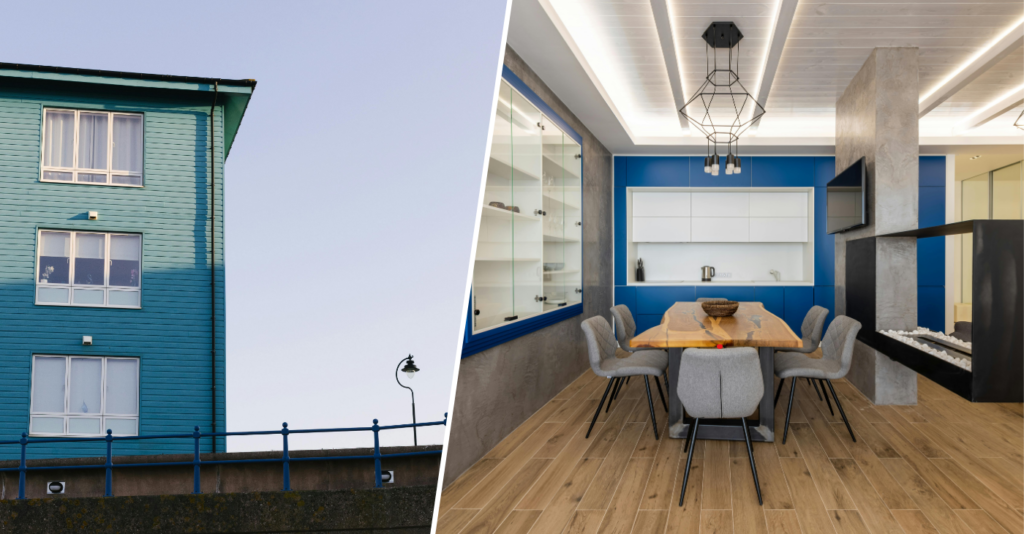
4. Timber battens: A contemporary and minimalist alternative
Timber battens offer a striking, minimalist alternative to traditional rendering, especially popular in modern architecture. This method involves fixing narrow wooden strips, or battens, vertically, horizontally, or diagonally to the exterior or interior walls. The result is a sleek, linear appearance that can be tailored to suit various design styles, from Scandinavian to industrial.
The choice of wood species for timber battens can greatly influence the overall look. Cedar is often chosen for its natural resistance to decay and its rich, warm tones, while larch and pine offer more economical options with similar aesthetic appeal. Timber battens can be left untreated to weather naturally, stained to enhance their color, or painted to match the building’s color scheme.
Advantages:
- Natural, warm aesthetic that complements both modern and traditional architecture
- Sustainable and environmentally friendly, especially when using FSC-certified wood
- Allows for air circulation behind the cladding, reducing the risk of moisture build-up and rot
- Can be easily customized with stains, paints, or different installation patterns
Considerations:
- Requires regular maintenance, such as staining or sealing, to prevent weathering and prolong the wood’s lifespan
- Wood is susceptible to rot, insect damage, and warping if not properly treated and maintained
- The installation process can be time-consuming, particularly for complex patterns
5. Decorative concrete panels: A modern, industrial look
Decorative concrete panels are a cutting-edge alternative to traditional rendering, ideal for those seeking a modern, industrial aesthetic. These panels are pre-cast and come in a variety of textures, patterns, and finishes, including smooth, textured, and polished surfaces. Concrete panels are not only visually striking but also incredibly durable and low-maintenance.
Concrete panels can be used for both exterior and interior walls, creating a seamless transition between indoor and outdoor spaces. The material’s versatility allows for the incorporation of custom designs, such as geometric patterns, grooves, and even embedded elements like metal or glass. This flexibility makes decorative concrete panels a popular choice for contemporary architecture. Read more
Advantages:
- High durability and resistance to weathering, impact, and fire
- Minimal maintenance required, with no need for regular painting or sealing
- Available in a wide range of textures and finishes, allowing for creative design possibilities
- Provides a modern, industrial aesthetic that complements urban and minimalist designs
Considerations:
- Concrete panels can be heavy, requiring strong structural support and specialized installation techniques
- Limited color options compared to other wall finishing materials, though custom finishes can be applied
- The cost of decorative concrete panels can be higher than other alternatives, particularly for custom designs

6. Brick slips: The classic charm of brick
Brick slips are thin slices of brick that replicate the look of a traditional brick wall without the need for full brick construction. This alternative is ideal for adding a classic, rustic charm to a property while being lightweight and easy to install. Brick slips can be applied to both exterior and interior walls, offering flexibility in design.
Brick slips are available in a variety of colors, textures, and sizes, allowing you to achieve the exact look you desire. Whether you prefer the rich, earthy tones of traditional red brick or the cool, contemporary look of grey or whitewashed brick, there’s a brick slip to match your vision.
Advantages:
- Authentic brick appearance without the weight and cost of full brick construction
- Easy to install over existing walls, with minimal preparation required
- Low maintenance and highly durable, resistant to weathering and wear
- Suitable for both modern and traditional designs, adding versatility to your project
Considerations:
- Requires careful installation to ensure a realistic and seamless appearance
- Limited insulation benefits compared to other alternatives like EWI or cladding
- The cost of high-quality brick slips can add up, particularly for large areas
7. PVC wall panels: Affordable and low-maintenance
PVC wall panels are a versatile and cost-effective alternative to rendering, particularly popular for interior applications. These panels are lightweight, easy to install, and come in a wide range of colors, patterns, and textures. While often used in bathrooms and kitchens, PVC panels can also be used on exterior walls for a clean, low-maintenance finish.
PVC panels are available in designs that mimic natural materials like wood, stone, and tile, offering a budget-friendly way to achieve high-end looks. The panels are waterproof, resistant to mold and mildew, and easy to clean, making them a practical choice for areas prone to moisture.
Advantages:
- Inexpensive and easy to install, with no need for specialized tools or labor
- Waterproof and resistant to mold, mildew, and moisture, making them ideal for humid environments
- Available in a wide variety of designs, including realistic wood, stone, and tile effects
- Minimal maintenance required, with no need for painting or sealing
Considerations:
- Less durable than other wall finishing materials, particularly for exterior use
- May not offer the same high-end appearance as more expensive materials like stone or timber
- Susceptible to damage from impact or excessive heat, limiting their use in certain areas
Conclusion – Wall finishing alternatives for modern homes
Choosing the right alternative to rendering depends on your specific needs, budget, and aesthetic preferences. Whether you’re looking to improve your home’s energy efficiency with External Wall Insulation, achieve a modern industrial look with decorative concrete panels, or add a touch of rustic charm with brick slips, there’s an option out there to suit your project. By exploring these innovative alternatives, you can create a unique and durable finish that not only enhances the beauty and functionality of your property but also provides long-term benefits in terms of cost savings, maintenance, and environmental impact.

